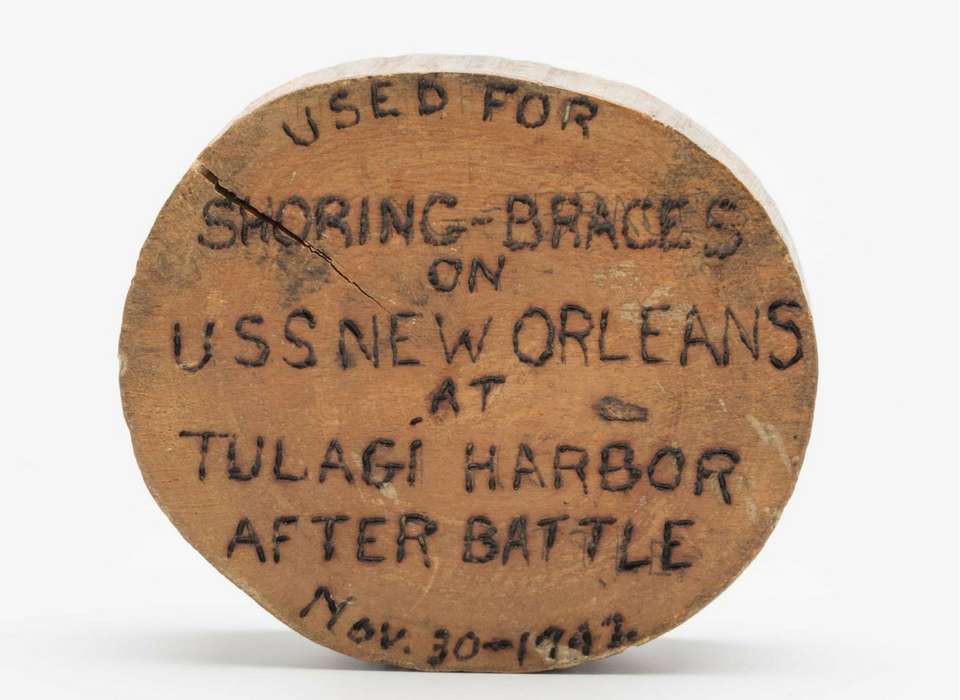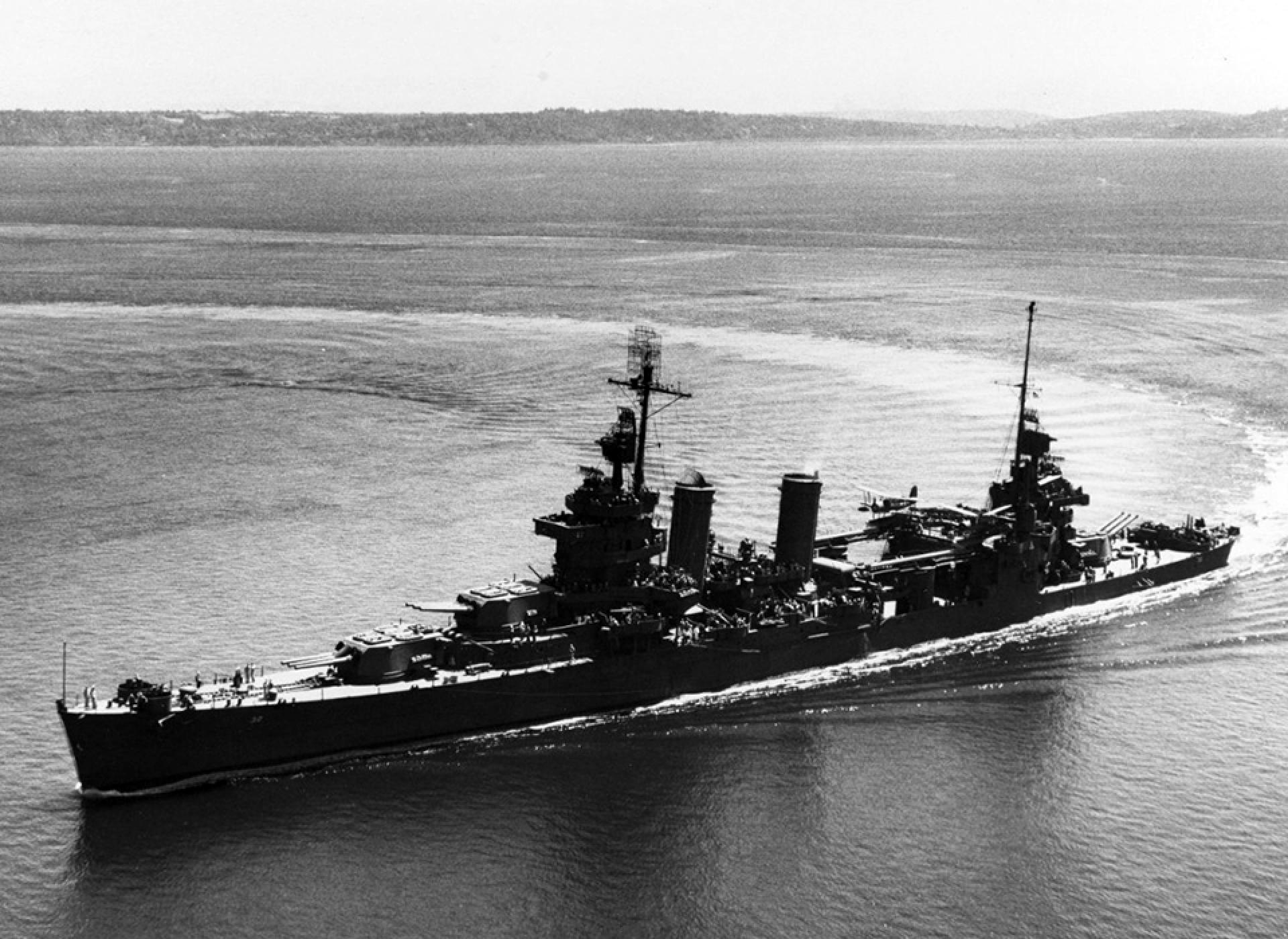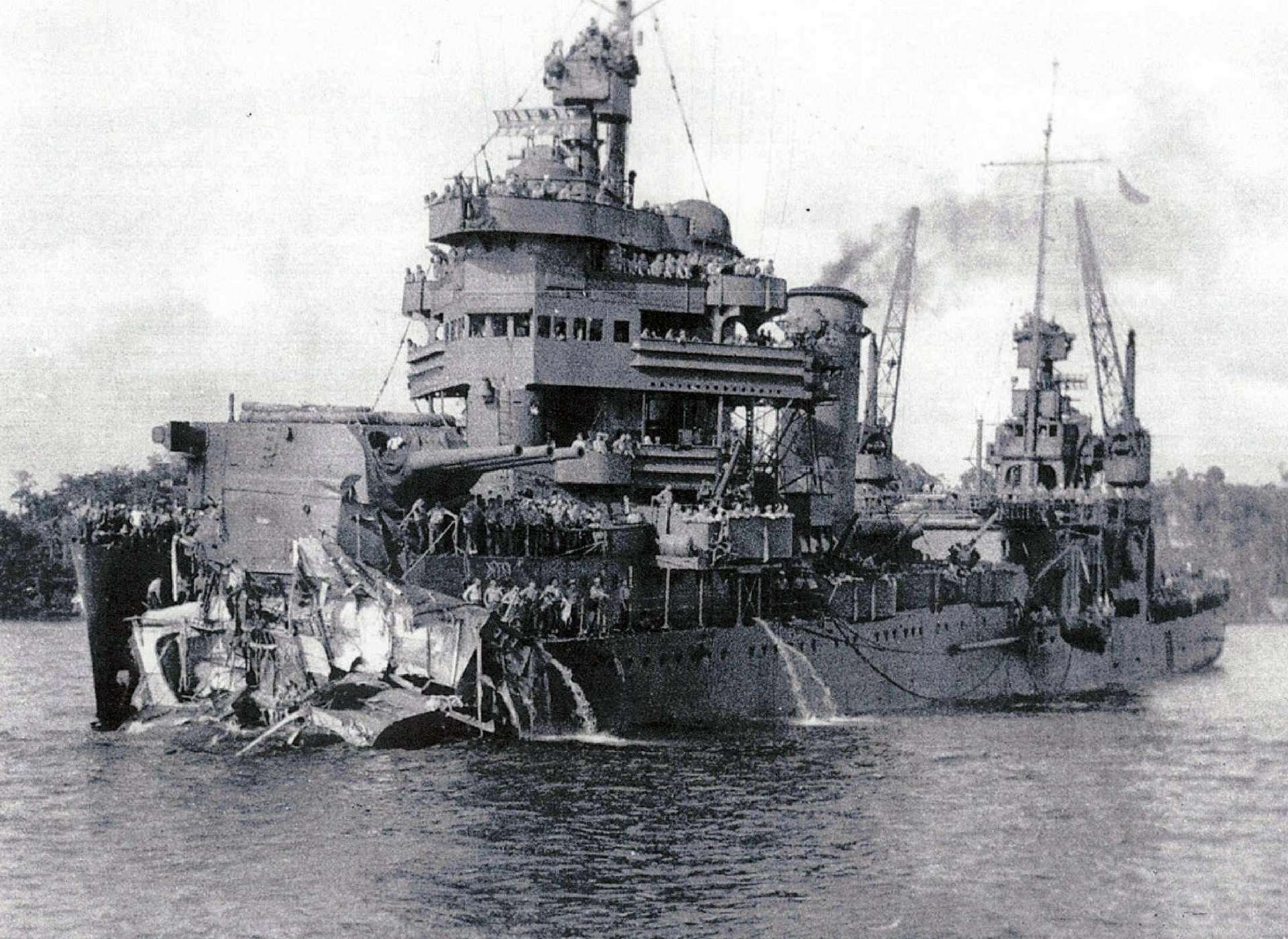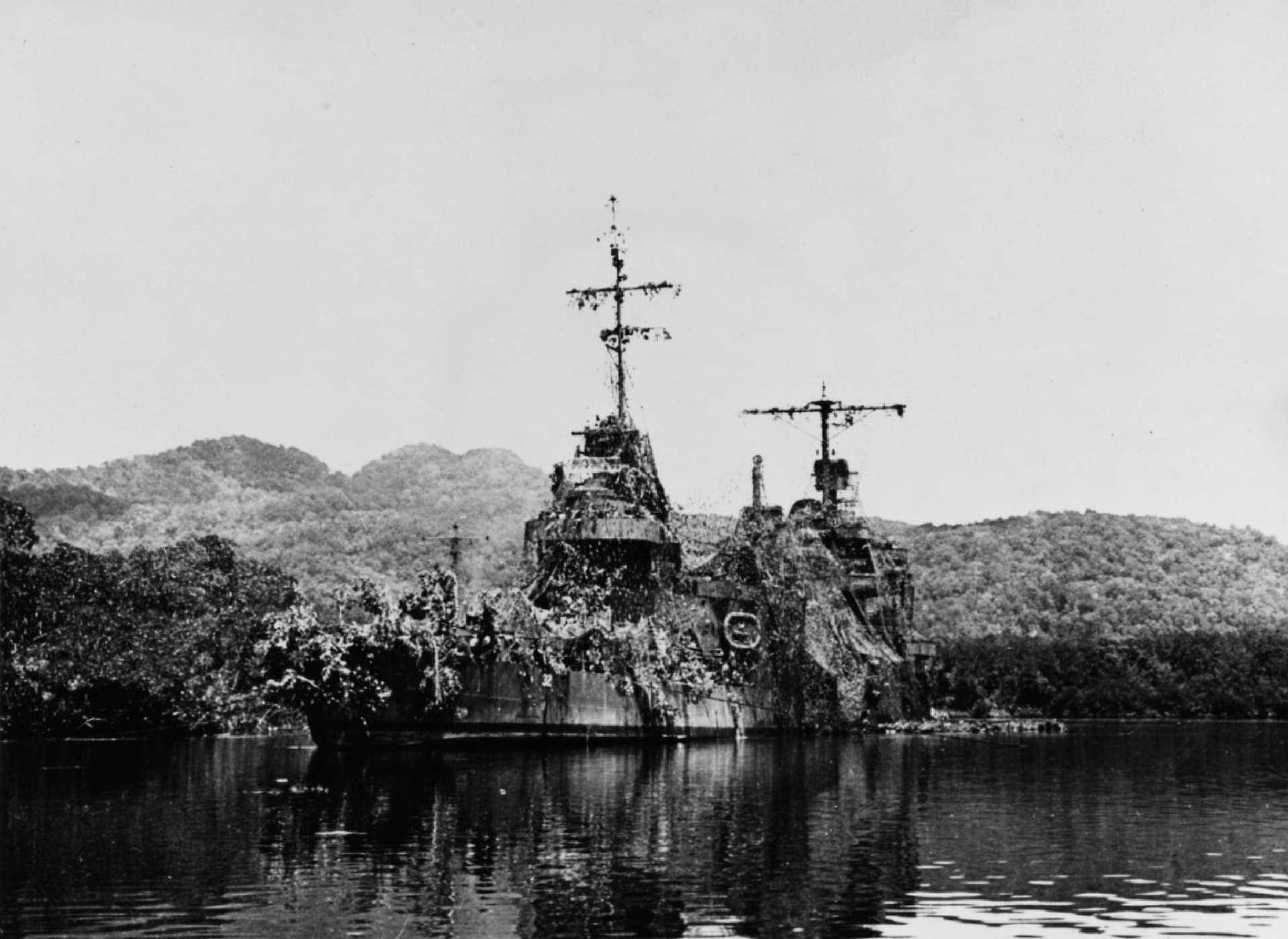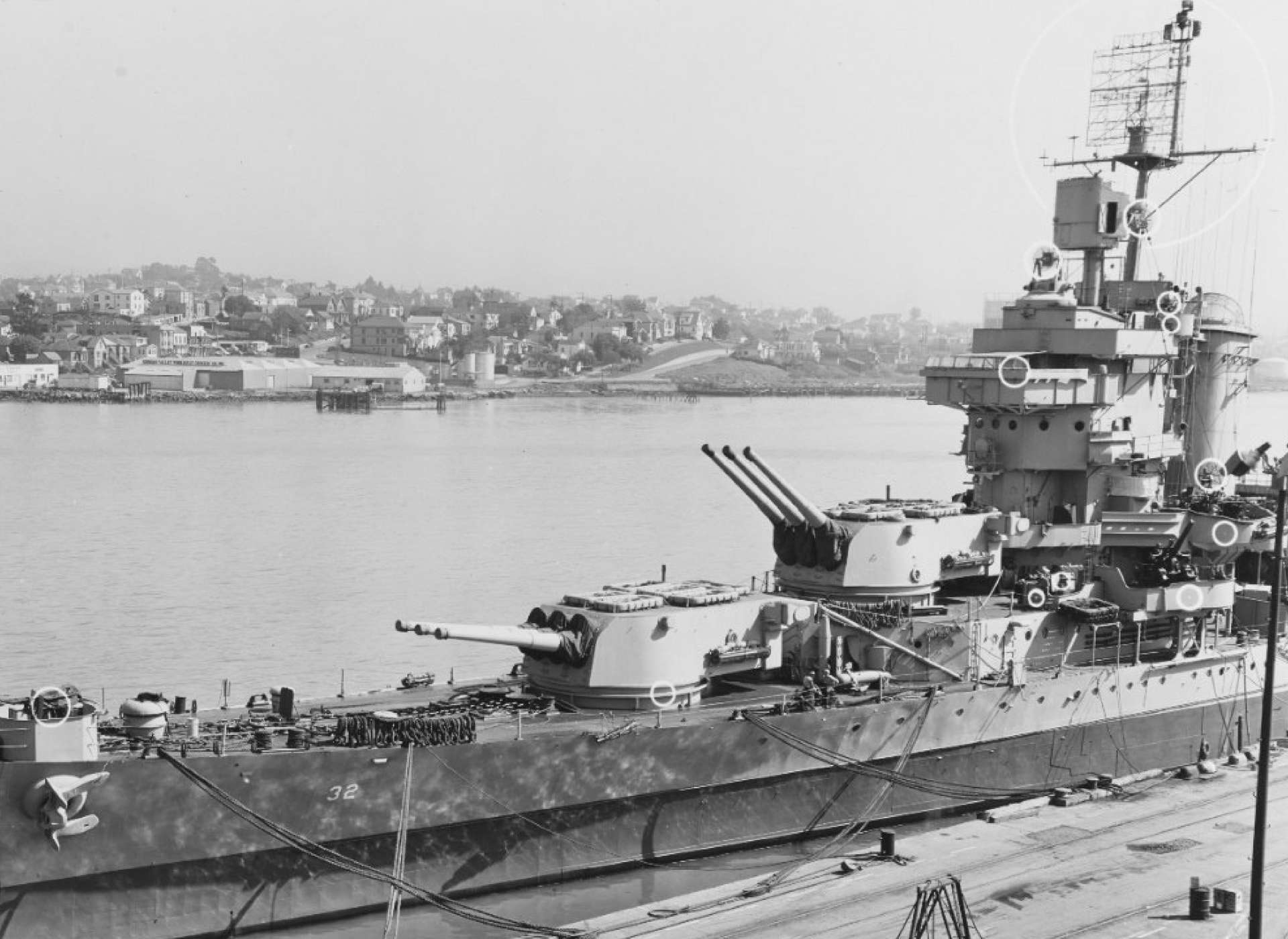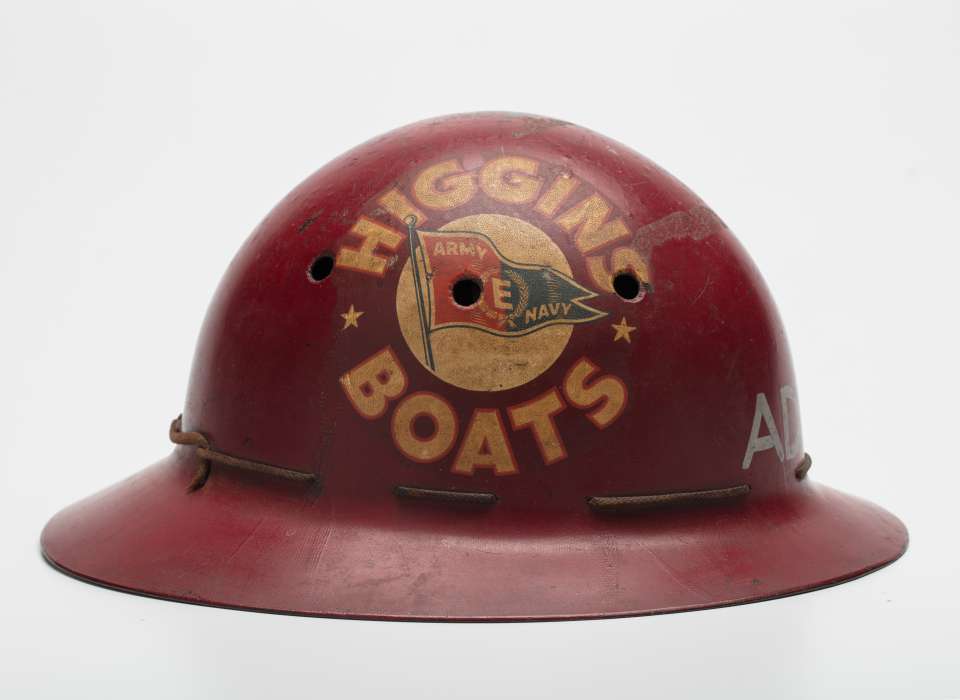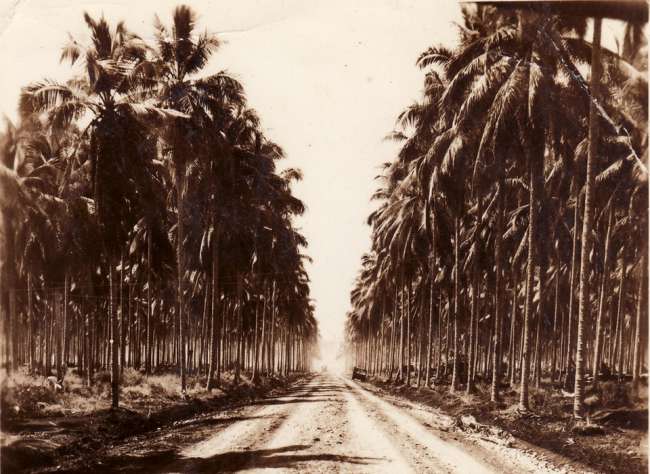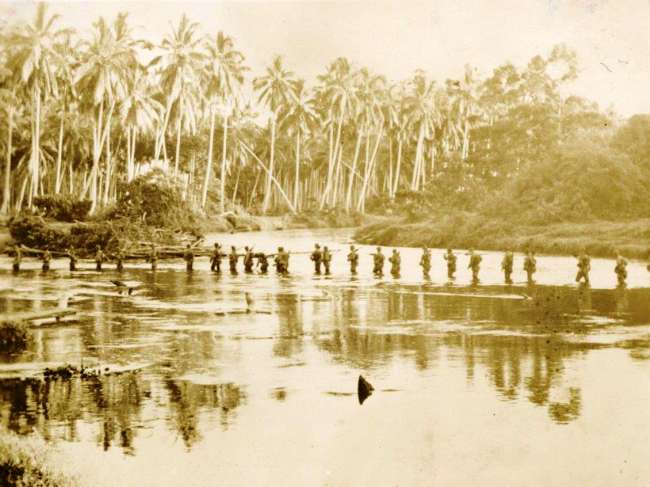The USS New Orleans (CA-32) carried the fight to the Japanese during the critical campaign year of 1942. A so-called “treaty cruiser,” it was the first of seven New Orleans-class heavy cruisers built during the 1930s. This class of cruiser was the last built by the US Navy to the treaty limitations of the Washington Naval Treaty of 1922, which limited the number, size, and firepower of the world’s major navies.
The New Orleans saw some of the heaviest fighting during the Pacific war, beginning on December 7, 1941, at Pearl Harbor and continuing with action at Coral Sea, Midway, Guadalcanal, and later in the Gilbert, Marshall, Marianas, Philippine, and Okinawa campaigns. It was during the Battle of Tassafaronga on November 30, 1942, off Guadalcanal that the New Orleans sustained its heaviest damage. A Japanese Type 93 “Long Lance” torpedo detonated the forward magazines and destroyed 150 feet of hull. The impact of the explosion killed 182 men. A further 50-yard length of the ship’s bow and forecastle tore away from the ship as she struggled to stay afloat.
The Damage Control Officer on the New Orleans, Lieutenant Commander Hubert M. Hayter, and two of his men, Lieutenant Richard A. Haines and Ensign Andrew L. Forman, remained at their damage control posts despite the fact that it was filling up with toxic fumes. These three brave men were eventually asphyxiated by the fumes and perished. The ship’s chaplain, Howell M. Forgy, later wrote about Hayter, “I wondered what he thought about in those final minutes, but I knew one thing: he was not afraid.”
-

-

The USS New Orleans (CA-32) near Tulagi on December 1, 1942. The bow was blown off forward of turret two during the Battle of Tassafaronga the night before. Photograph courtesy US Navy.
-

USS New Orleans (CA-32) camouflaged at Tulagi Harbor in the Solomon Islands after she was torpedoed during the Battle of Tassafaronga. Photograph courtesy US Navy.
-

The USS New Orleans (CA-32) at the Mare Island Navy Yard in California on March 8, 1945. The ship's welded bow structure (forward of her second 8/55 triple gun turret) is visible in this photograph. This replaced her original riveted-construction bow, which was lost during the Battle of Tassafaronga at the end of November 1942.
Following the end of the battle, the New Orleans limped back to Tulagi harbor across from Guadalcanal where temporary repairs were made to try to save the ship. After working furiously for 11 days, the crew of the New Orleans managed to get the ship in a good enough condition to sail for Australia for more permanent repairs. However, due to the temporary coconut log bow, the ship had to sail backward to prevent flooding from sinking the ship.
A piece of the coconut log is included in the Museum’s new special exhibit The Pelican State Goes to War: Louisiana in World War II. The log was brought back to the United States by John Richey, who served as an electrician on the New Orleans throughout the war. Richey’s bunk was destroyed by the explosion caused by the Japanese torpedo’s impact. The New Orleans was awarded 17 battle stars for its service in the Pacific, tying it for third most in the theater.
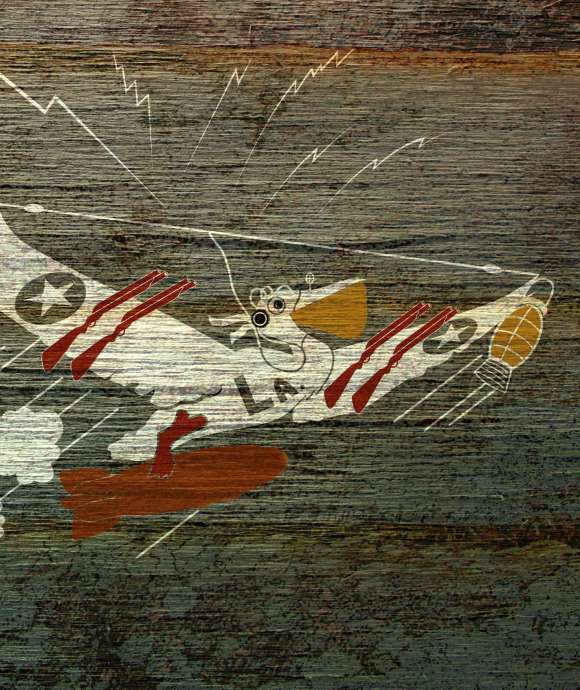
The Pelican State Goes to War
A special exhibit spotlights Louisiana's role in World War II.
James Linn
A New Orleans native, James Linn first became involved with the institution then known as The National D-Day Museum in 2001 as an eighth-grade volunteer on weekends and during the summer. Linn joined The National WWII Museum staff in 2014 and served as a Curator until 2020.
Cite this article:
MLA Citation:
APA Citation:
Chicago Style Citation:
